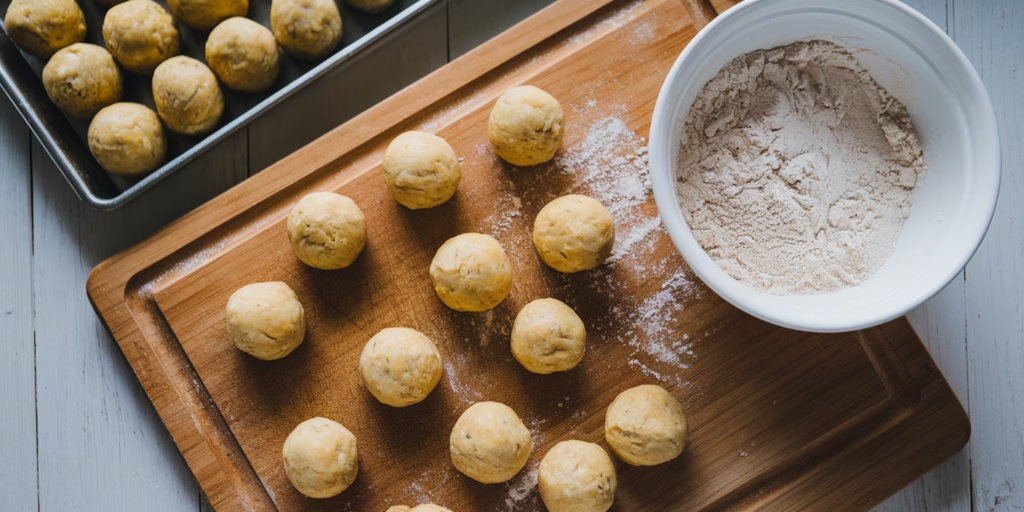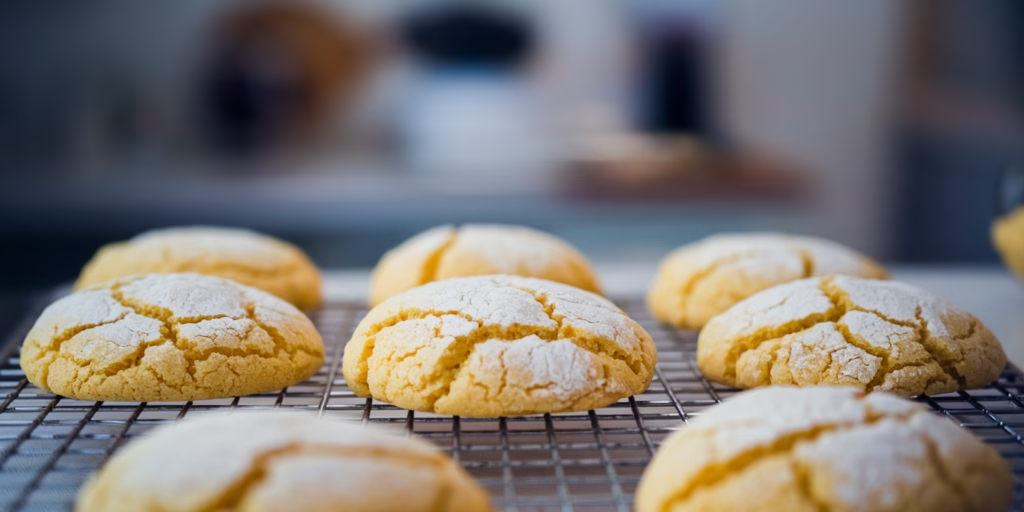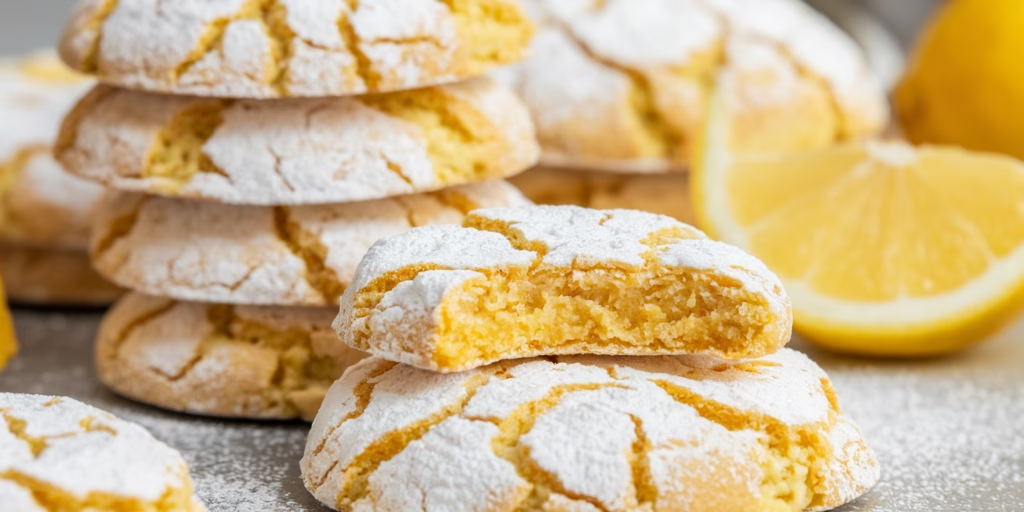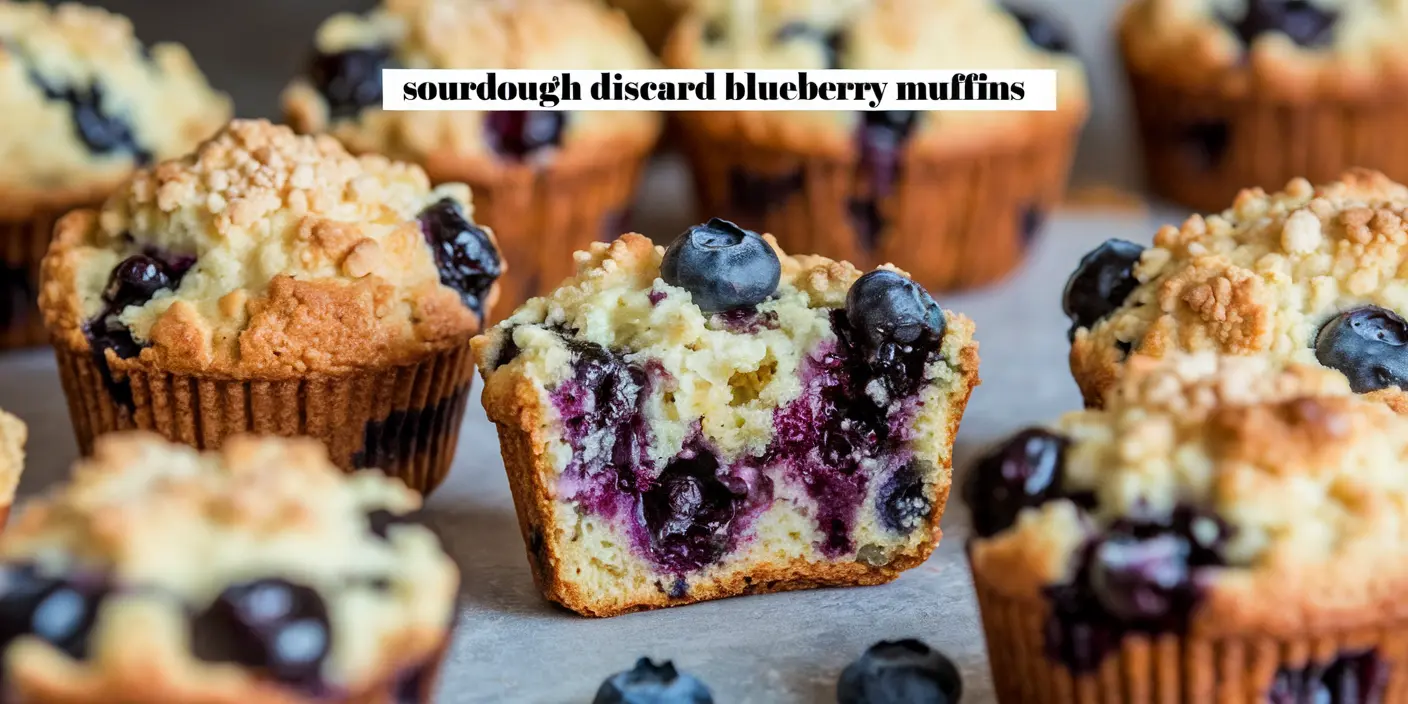
Sourdough baking has taken the culinary world by storm, and for good reason. The tangy flavor and unique texture of sourdough bread are unparalleled. But what if I told you that the magic of sourdough doesn’t have to end with bread? Enter the delightful world of Sourdough Discard Lemon Crinkle Cookies—a zesty, sweet treat that not only satisfies your sweet tooth but also makes excellent use of that leftover sourdough starter.
Why Sourdough Discard?
For those nurturing a sourdough starter, the term “discard” is all too familiar. Each time you feed your starter, you’re instructed to remove a portion to maintain balance and prevent overflow. While it might seem wasteful, this “discard” is a treasure trove of flavor waiting to be repurposed. Incorporating sourdough discard into recipes not only reduces waste but also imparts a subtle tanginess that elevates baked goods to a new level.
The Allure of Lemon Crinkle Cookies
Lemon crinkle cookies are beloved for their bright citrus flavor and distinctive crinkled appearance. The addition of sourdough discard introduces a depth of flavor, creating a harmonious blend of sweet, tangy, and tart. The result? A cookie that’s crispy on the outside, soft and chewy on the inside, with a flavor profile that’s both familiar and intriguingly complex.
What You Will Need?
Let’s delve into the ingredients that make these cookies irresistible, understanding their roles and exploring possible alternatives.
Sourdough Discard (½ cup)
- Purpose: Acts as a natural leavening agent, adding moisture and a subtle tangy flavor to the cookies.
- Alternatives: If you don’t have sourdough discard, you can substitute with an equal amount of plain yogurt or buttermilk to achieve a similar tanginess and moisture content.
Unsalted Butter, Softened (½ cup)
- Purpose: Provides richness, flavor, and contributes to the tender crumb of the cookies.
- Alternatives: Margarine or plant-based butter can be used for a dairy-free option. Note that this may slightly alter the flavor and texture.
Granulated Sugar (1 cup)
- Purpose: Sweetens the cookies and aids in achieving a tender texture.
- Alternatives: Coconut sugar or light brown sugar can be used, though they may impart a different flavor and color to the cookies.
Large Egg (1)
- Purpose: Acts as a binding agent, providing structure and moisture.
- Alternatives: For an egg-free version, use a flaxseed egg (1 tablespoon ground flaxseed mixed with 3 tablespoons water) or a commercial egg replacer.
Fresh Lemon Juice (1 tablespoon) and Lemon Zest (1 tablespoon)
- Purpose: Infuse the cookies with bright, citrusy flavor.
- Alternatives: Lime or orange juice and zest can be used for a different citrus twist.
All-Purpose Flour (1¾ cups)
- Purpose: Provides structure to the cookies.
- Alternatives: A 1:1 gluten-free flour blend can be used for a gluten-free version.
Baking Powder (½ teaspoon) and Baking Soda (¼ teaspoon)
- Purpose: Leavening agents that help the cookies rise and achieve a light texture.
- Alternatives: There are no direct substitutes; however, if you’re out of one, you can adjust the amounts (e.g., use a bit more baking powder if you’re out of baking soda), but this may affect the texture.
Salt (¼ teaspoon)
- Purpose: Enhances flavor and balances sweetness.
- Alternatives: Sea salt or kosher salt can be used in the same amount.
Powdered Sugar (½ cup, for rolling)
- Purpose: Creates the signature crinkled appearance and adds a touch of sweetness.
- Alternatives: Granulated sugar can be used, but it won’t provide the same visual effect or delicate sweetness.

Step-by-Step Recipe
Now that we’ve explored the ingredients, let’s dive into the baking process.
1. Preheat the Oven
- Temperature Setting: Set your oven to 350°F (175°C).
- Preparation: Line a baking sheet with parchment paper to prevent the cookies from sticking and to facilitate easy cleanup.
2. Cream Butter and Sugar
- Ingredients: Combine ½ cup (113g) of unsalted butter, softened to room temperature, with 1 cup (200g) of granulated sugar.
- Method: Using a stand mixer fitted with the paddle attachment or a hand mixer, beat the butter and sugar together on medium speed until the mixture becomes light and fluffy. This process typically takes about 2-3 minutes and is crucial for incorporating air into the dough, resulting in a tender cookie texture.
3. Add Wet Ingredients
- Sequence: First, add 1 large egg to the creamed mixture and beat until fully incorporated.
- Sourdough Starter: Mix in ¾ cup (180g) of sourdough discard. The discard should be at room temperature to blend seamlessly.
- Lemon Components: Add 2 tablespoons (30ml) of fresh lemon juice and the zest of one medium lemon (about 1 tablespoon). The lemon zest provides concentrated flavor, while the juice adds acidity and moisture.
- Mixing: Continue to beat the mixture until all ingredients are well combined. It’s normal for the batter to appear slightly curdled at this stage due to the acidity of the lemon juice interacting with the dairy components.
4. Combine Dry Ingredients
- Ingredients: In a separate bowl, whisk together 2¾ cups (345g) of all-purpose flour, 1 teaspoon (5g) of baking powder, ½ teaspoon (3g) of baking soda, and ½ teaspoon (3g) of salt.
- Purpose: Whisking ensures that the leavening agents and salt are evenly distributed throughout the flour, promoting uniform rising and flavor in the cookies.
5. Form the Dough
- Integration: Gradually add the dry ingredients to the wet mixture, mixing on low speed or by hand until just combined.
- Caution: Avoid overmixing, as this can develop gluten in the flour, leading to tougher cookies. The dough should be soft but manageable.
6. Chill the Dough
- Purpose: Cover the dough and refrigerate for at least 2 hours or up to 3 days. Chilling solidifies the fat in the dough, which helps prevent excessive spreading during baking and enhances the flavor.
7. Shape the Cookies
- Portioning: Using a tablespoon or a small cookie scoop, portion out the chilled dough. Each piece should be approximately 1 tablespoon in size.
- Rolling: With your hands, roll each portion into a smooth ball to ensure even baking.
8. Coat in Powdered Sugar
- Preparation: Place about 1 cup (120g) of powdered sugar in a shallow bowl.
- Coating: Roll each dough ball thoroughly in the powdered sugar, ensuring a generous and even coating. This layer is essential for creating the signature crinkled appearance as the cookies expand and the sugar cracks during baking.
9. Arrange on Baking Sheet
- Placement: Place the coated dough balls onto the prepared baking sheet, spacing them about 2 inches apart to allow for spreading.
- Optional Step: For a more pronounced crinkle effect, some bakers recommend rolling the dough balls first in granulated sugar and then in powdered sugar. The granulated sugar can help dry the surface, promoting better cracking.
10. Bake
- Baking Time: Place the baking sheet in the preheated oven and bake for 10-12 minutes.
- Indicators: The cookies are done when they have a crinkled surface, the edges are set, and the centers appear slightly undercooked. They should be lightly golden around the edges.
11. Cool
- Initial Cooling: Remove the baking sheet from the oven and allow the cookies to cool on the sheet for about 5 minutes. This allows them to firm up slightly, making them easier to transfer.
- Transfer: Using a spatula, move the cookies to a wire cooling rack to cool completely. Cooling on a rack prevents the bottoms from becoming soggy and helps maintain their texture.

Storing Your Lemon Crinkle Cookies
To keep your cookies fresh and delightful:
- At Room Temperature: Store in an airtight container for up to a week. Ensure the container is truly airtight to maintain softness.
- Freezing: Place baked cookies in a single layer in a freezer-safe container for up to 4 months. Defrost in the refrigerator before serving.

There you have it—a delightful way to transform your sourdough discard into zesty lemon crinkle cookies. These treats are sure to impress with their tangy flavor and charming appearance. So, next time you’re pondering what to do with that discard, remember this recipe and bake up a batch of sunshine!
FAQs
Can I prepare the dough in advance?
Absolutely! You can make the dough ahead of time, roll it into balls, and freeze them before baking. When you’re ready, thaw the dough and bake as directed.
What if I don’t have sourdough discard?
No worries! If you’re not a sourdough baker, you can omit the discard. The cookies will still be delicious, though they’ll lack the subtle tang that the discard provides.
Why did my cookies not crinkle properly?
Chilling the dough is essential. If the dough is too warm, the cookies may spread too quickly, preventing the crinkle effect. Ensure adequate chilling time before baking.
Can I use bottled lemon juice?
Fresh lemon juice is recommended for the best flavor. Bottled juice can have a different taste and may not provide the same zestiness.

Sourdough Discard Lemon Crinkle Cookies Recipe
- Total Time: 27 minutes
- Yield: 24
Description
Ever found yourself pondering what to do with that leftover sourdough discard? Well, you’re in for a treat! Let’s dive into the delightful world of Sourdough Discard Lemon Crinkle Cookies. These zesty goodies not only satisfy your sweet tooth but also give a second life to your sourdough starter. Ready to embark on this baking adventure?
Ingredients
- 1/2 cup sourdough discard (100% hydration)
- 1/2 cup unsalted butter, softened
- 1 cup granulated sugar
- 1 large egg
- 1 tbsp fresh lemon juice
- 1 tbsp lemon zest
- 1 3/4 cups all-purpose flour
- 1/2 tsp baking powder
- 1/4 tsp baking soda
- 1/4 tsp salt
- 1/2 cup powdered sugar (for rolling)
Instructions
- Preheat your oven to 350°F (175°C) and line a baking sheet with parchment paper.
- In a mixing bowl, cream together the butter and granulated sugar until light and fluffy.
- Add the egg, sourdough discard, lemon juice, and lemon zest. Mix until combined.
- In a separate bowl, whisk together the flour, baking powder, baking soda, and salt. Gradually add the dry ingredients to the wet ingredients, mixing until a soft dough forms.
- Scoop the dough into tablespoon-sized balls and roll each ball in powdered sugar until fully coated.
- Place the coated dough balls onto the prepared baking sheet, spacing them about 2 inches apart.
- Bake for 10-12 minutes, or until the cookies are set and the tops have a crinkled appearance.
- Allow the cookies to cool on the baking sheet for 5 minutes before transferring them to a wire rack to cool completely.
- Dust with extra powdered sugar if desired and enjoy!
- Prep Time: 15 minutes
- Cook Time: 12 minutes
Nutrition
- Serving Size: 1
- Calories: 110 per cookie
- Sugar: 13 g
- Sodium: 79 mg
- Fat: 4 g
- Saturated Fat: 2.5 g
- Carbohydrates: 16 g
- Protein: 1 g
- Cholesterol: 18 mg





